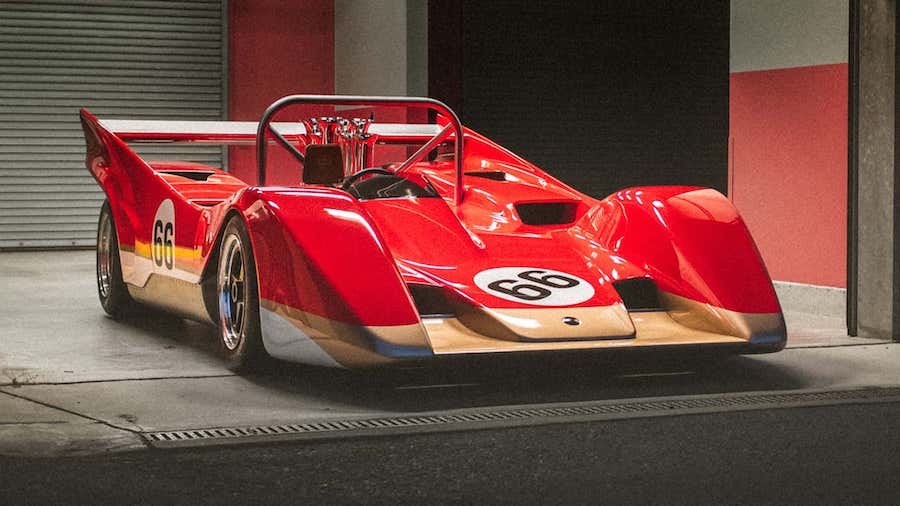Lotus Debuts “Lost” Type 66 Track Car For Limited Production, Costs $1.3M

Lotus unveiled the Type 66 today during Monterey Car Week and confirmed it would go into production as a low-volume track-only car. Based on “lost” Lotus designs from 1970, the Type 66 combines the automaker’s motorsport heritage with modern, state-of-the-art technology and components.
The Type 66 takes its name and inspiration from a study Lotus founder Colin Chapman commissioned while exploring the development of a Can-Am race car. However, since Chapman’s primary focus was on Formula 1, the project never proceeded beyond technical drawings and scale models. Now rediscovered and reimagined, Lotus will produce 10 examples of the Type 66, which will cost approximately $1.3 million (or approximately £1.0 million).
Wearing the red, white, and gold colors of the Lotus Type 72 F1 car, the Type 66 sports a period-appropriate pushrod V8 with Can-Am–inspired air trumpets, although it’s been Lotus-tuned to produce 830 horsepower and 550 pound-feet of torque and now features modern-day components like a forged crank, rods, and pistons. The retro bodywork is all carbon fiber, while the chassis is made from extruded aluminum sections, bonded joints, and aluminum honeycomb panels. Modern components include a sequential racing gearbox, an ABS braking system, and a host of contemporary safety equipment.
On hand for the Type 66’s unveiling were two important members of Lotus history. Two-time F1 World Champion Emerson Fittipaldi was there, as was Clive Chapman, managing director of Classic Team Lotus and son of Colin Chapman. It was Chapman who was the catalyst of the Type 66 as he held the original documents from the design study. Had the Type 66 been built, it would have likely been driven by Fittipaldi, who joined Lotus in 1970.
To bring the car to life, designers used computer software to digitize a series of quarter- and tenth-scale drawings to create 3D renderings of the Type 66. They also took inspiration from Colin Chapman’s ideas, including a cockpit enclosure to reduce drag and improve airflow to the rear wing.
The front wing was designed to channel air from the front of the car, through and underneath the rear wings, generating more downforce than the vehicle’s total weight at full speed. This concept of porosity, where air travels through a vehicle, rather than around it, remains a signature element of Lotus vehicle design and is used on modern Lotus vehicles like the Emira sports car and Evija hypercar.
To simulate track performance, advanced “driver-in-the-loop” technology was used to estimate how the vehicle would perform on race tracks like Laguna Seca, Silverstone, Fuji, and Spa. Lotus says the Type 66 matches the performance of a modern GT3 race car. On some circuits, such as Laguna Seca, simulator work suggests it could actually be quicker.
Following the car’s world debut at The Quail, A Motorsports Gathering, the Lotus Type 66 will be displayed on the Concept Lawn at the Pebble Beach Concours d'Elegance on Sunday, August 20.
Related News
